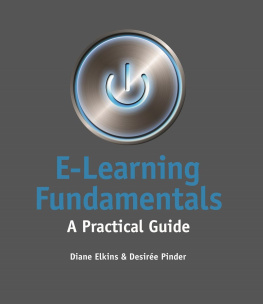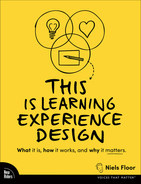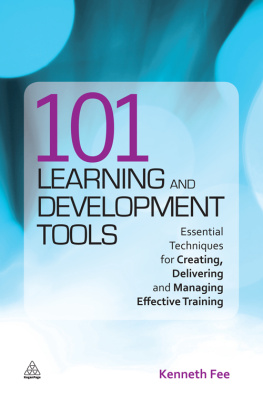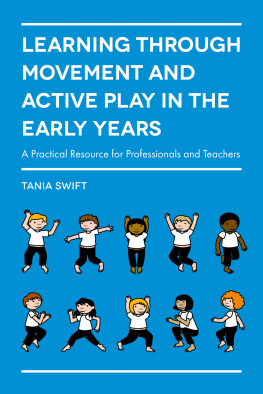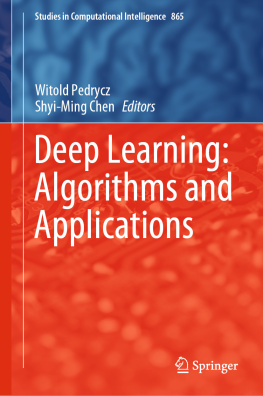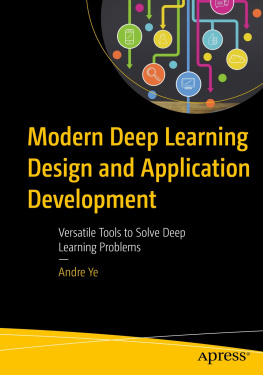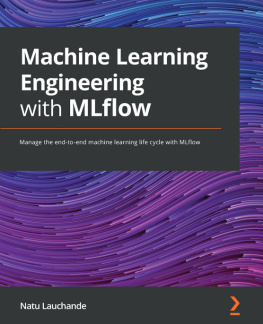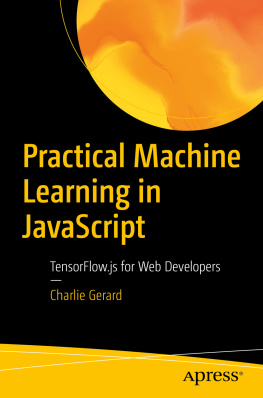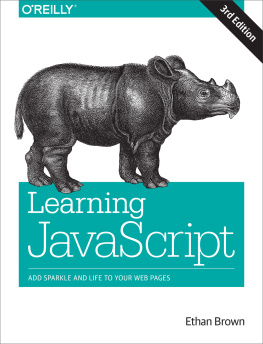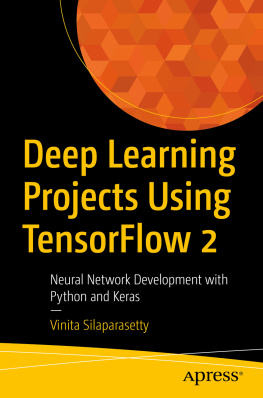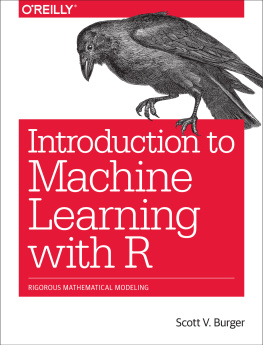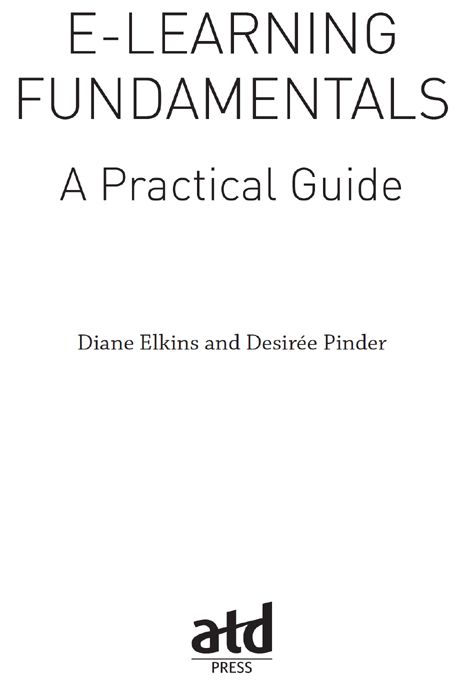
2015 ASTD DBA the Association for Talent Development (ATD)
All rights reserved. Printed in the United States of America.
18 17 16 15 1 2 3 4 5
No part of this publication may be reproduced, distributed, or transmitted in any form or by any means, including photocopying, recording, or other electronic or mechanical methods, without the prior written permission of the publisher, except in the case of brief quotations embodied in critical reviews and certain other noncommercial uses permitted by copyright law. For permission requests, please go to www.copyright.com, or contact Copyright Clearance Center (CCC), 222 Rosewood Drive, Danvers, MA 01923 (telephone: 978.750.8400; fax: 978.646.8600).
ATD Press is an internationally renowned source of insightful and practical information on talent development, workplace learning, and professional development.
ATD Press
1640 King Street
Alexandria, VA 22314 USA
Ordering information: Books published by ATD Press can be purchased by visiting ATDs website at www.td.org/books or by calling 800.628.2783 or 703.683.8100.
Library of Congress Control Number: 2015936412
ISBN-10: 1-56286-947-7
ISBN-13: 978-1-56286-947-2
e-ISBN: 978-1-60728-272-3
ATD Press Editorial Staff
Director: Kristine Luecker
Manager: Christian Green
Community of Practice Manager, Learning Technologies: Justin Brusino
Developmental Editor: Kathryn Stafford
Cover Design: Julia Prymak, Pryme Design
Text Design: Maggie Hyde
Printed by Versa Press, Inc., East Peoria, IL, www.versapress.com
CONTENTS
PREFACE

I still remember my first e-learning conference. It was October 2000, and I had recently been tapped to be in charge of e-learning production for the company I was working for at the time. I knew Excel, which made me the techie on the team. Now that I was responsible for converting hours and hours of instructor-led courses to e-learning, I tried to get my hands on whatever I could to find out what I needed to know. Back then, it wasnt as easy as today. I didnt know what I didnt know. At the conference, my boss and I attended sessions on one subject that raised questions about 10 other subjects. And many of the speakers were throwing out terms we didnt know. While we left with more questions than answers, we figured it out. We created some courses that were very successful, but it wasnt always a smooth process.
Fast forward several years. I joined forces with Desire Pinder to start our own e-learning development company, what is now Artisan E-Learning. By this time, a whole industry had been built up around e-learning. But, today, for folks just getting started, it can still be challenging to jump in. As opposed to 15 years ago, you now have access to all sorts of information about e-learning strategy and developmentbut perhaps too much information. It can still be hard to know where to get started, to know which sessions to attend at a conference, to know which blogs to read, and sometimes just to know what any of them are talking about!
Thats where this book comes in. Desire and I started teaching a class at the University of North Florida to help people who wanted to get up and running with e-learning. The early version of this book was written to serve as the text for that course. For those students, we wanted to provide a comprehensive overview of the e-learning process, from the ground up; we want to do the same for you today.
We hope that this book helps point you in the right direction and gives you a boost of knowledge and confidence as you start your e-learning journey.
Bon voyage!
Diane Elkins
INTRODUCTION

E-Learning Fundamentals: A Practical Guide offers a comprehensive overview of the e-learning process, from the ground up. While other books and resources may go deep into one aspect or another (gamification, instructional design, mobile), this book offers a little bit of everythinga base of knowledge that will help you understand what goes into e-learning development.
Book chapters are organized according to the ADDIE model (analyze, design, develop, implement, evaluate), which is widely used to manage training development.
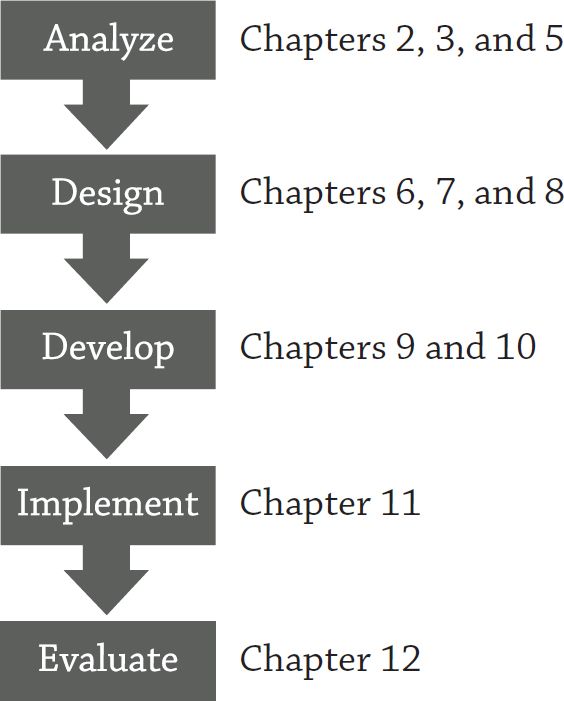
First, then provides an overview of the various technology decisions youll need to make.
The second half of the book looks at self-paced e-learning development from a tactical perspective, continuing to follow the steps in the ADDIE model. offers a glimpse of ways to prepare for the future. Along the way, youll get practical advice, checklists, templates, resource tips, and process details for everything from identifying organizational needs to writing storyboards to ensuring the quality of your online courses.
Be sure to watch for these helpful features:
 | Tips From the Pros: Get expert advice on how to put the concepts in this book into action. |
 | Been There; Done That: Benefit from someone elses experience so you dont have to learn these lessons the hard way. |
 | Dive Deeper: Here youll find references to books and other resources to help you learn more about a certain subject. |
 | Caution: Watch out for these potential pitfalls. |
 | Jargon Alert: The e-learning world has lots of special vocabulary and abbreviations. Learn the important ones here. |
 | The Great Debate: Not everyone in the e-learning world agrees on everything. Here you can learn about different perspectives on a hot topic. |
 | For Your Toolbox: Many of the tools in this book (such as checklists and forms) are available for download on the books companion website: www.td.org/elearningtools. |
1
WHAT IS E-LEARNING?

Have you ever learned how to do something from a YouTube video? Ever found an answer to a question from Wikipedia or a discussion forum? Any time you learn something from an electronic source, that is e-learningelectronic learning.
In a more formal sense (and for the purposes of this book), e-learning is any course or structured learning event that uses an electronic medium to meet its objectives. It can have many of the same elements of more traditional learning (text, audio, tests, homework), but a computer is used to meet or enhance the learning objectives.
Next page
